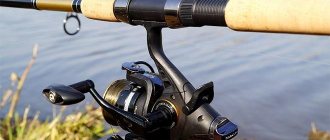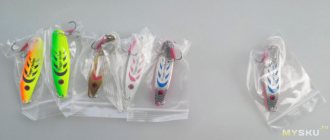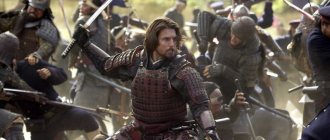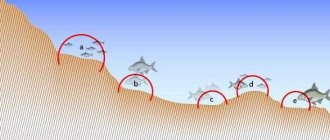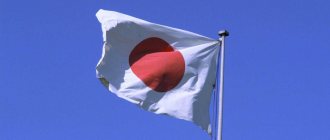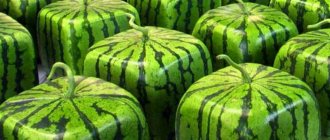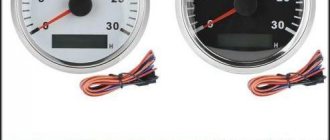How is hiragana used?
Since hiragana forms the basis of written Japanese, there are several cases where it plays an important role: Furigana Furigana is, simply put, a guide to the pronunciation of difficult Japanese words, written as small hiragana characters above or to the side of the kanji characters. Kanji are complex Chinese characters that represent entire words and are most often used in texts. If you can't read the kanji, there will most likely be furigana characters nearby for a clue. You can also see furigana in Japanese lessons in the LingQ library.
Suffixes (and Sentence Separators) Suffixes play an important role in Japanese grammar. They are added at the end of a word and thus indicate what part of speech it is - a noun, an adverb or a verb. The most common suffixes are は (wa), が (ga), and を (wo). They also help you understand the flow of words in written text because words are not separated by spaces. The suffix placement and grammatical hiragana (below) show where the word ends. Polyglot Steve Kaufmann made an excellent video on suffixes in Japanese on his YouTube channel.
Hiragana grammar is also an important part of sentence grammatical structure. Since whole words are most often written as kanji characters, hiragana is used to indicate the grammatical role of a word in a sentence, such as tense or participial construction. For example, 勉強 (ben'kyu) means 'learning' in noun form. The present tense of a verb is made by adding している (shiteiru) to the noun, becoming 勉強している (ben'kyū shiteiru) or 'studying'.
Hiragana. 5 Ways to Learn Hiragana
If you just can’t learn the Japanese alphabet Hiragana, then learn about 5 ways to memorize and choose the method that suits you.
So, let's start with the simple ones:
1. Write down each sign , saying it out loud as many times as necessary to remember it. Cramming helps some people.
2. Remember the signs using A4 size cards . Make large cards: on one A4 sheet, write one hiragana sign large with a bright marker, and at the bottom, small, so as not to catch the eye (you can use a pen), sign the reading of this sign. Hang them on the walls of your room or apartment. Every time the cards come into your field of vision, try to remember how the sign is read. If you can't remember, look at the bottom of the card to read the sign. Before this task, you can practice a little hiragana.
Important! Be careful not to damage the walls when attaching the cards.
3. Remember the signs using small cards . Cut small cards from paper or cardboard and write one hiragana character on one side and its reading on the other. We look at the sign and try to remember how it is read. Such small cards are convenient to take with you and repeat, for example, in transport, in line, etc.
4. Cut small cards from paper or cardboard , as in the previous method. Unlike previous cards, there is no need to write the reading of the sign on the back. Place these cards on the table with the signs facing down and, pulling out one card at a time, try to read the sign. If you can read it, put the card aside. If you couldn’t read the sign, we return the card back to its original place. The goal is to read all the signs and put them aside. First you need to work out these signs a little.
5. Make combinations of characters or some words from small cards (even if they are not in Japanese) and try to read them. Find out 5 more ways to memorize hiragana, with which you will learn not only to read them, but also to write them correctly - sign up for the free webinar “All about the Japanese alphabet hiragana” using this link: https://vsyo-o-hiragane-vebreg.plp7 .ru/
WHAT ELSE WILL BE ON THE WEBINAR:
* Analysis of the table of hiragana characters. How to pronounce them correctly
* Voiced and unvoiced sounds. How are they formed?
* Formation of syllables with the signs や/ya、ゆ/yu、よ/yo. How to read correctly
* Formation of long sounds
* Double consonants
* 10 ways to learn the Hiragana alphabet
* Learn the first row of hiragana characters through associations
* Receive a Gift Certificate in honor of the upcoming New Year. This is definitely not to be missed!
*Receive a bonus if you stay at the webinar until the end
Sign up for the webinar via the link https://vsyo-o-hiragane-vebreg.plp7.ru/ and see you online!
What methods of memorizing hiragana have you used or are you using now?
This is a useful read:
- Japanese writing. Japanese alphabet hiragana. How to write
- Enrollment for Online Japanese Courses for Beginners
- Homework for the online Japanese lesson “What time is it?” Time in Japanese"
Tagged 5 ways to learn hiragana all about hiragana how to learn hiragana learning hiragana hiragana Japanese alphabet hiragana
Hiragana table
The English language consists of vowels and consonants. Hiragana is structured a little differently, in which characters are grouped in table form depending on the sounds they represent.
This table is called Gojuon, which literally translates as “table of 50 sounds.” Each row has the same first consonant, and the columns contain the same vowel sounds.
The first row of this table contains vowel sounds: あ (a), い (i), う (u), え (e), お (o). These vowel sounds determine the order of the letters in all subsequent rows, grouped according to their consonant and vowel sounds: each row always contains the same consonant, and the columns always have the same vowel sound. This makes five letters in a row (except for the rows starting with Y and W).
Hiragana Table: Gojuon
| A | I | U | E | O | |
| K | か | き | く | け | こ |
| S | さ | し | す | せ | そ |
| T | た | ち | つ | て | と |
| N | な | に | ぬ | ね | の |
| H | は | ひ | ふ | へ | ほ |
| M | ま | み | む | め | も |
| Y | や | ゆ | よ | ||
| R | ら | り | る | れ | ろ |
| W | わ | を | |||
| *N | *ん |
*The ん, or 'N' sound does not have a vowel associated with it. It is pronounced in the same way as the English 'N.'
*The sound ん or 'N' does not have a paired vowel. He pronounces it the same way as the English 'N'. Now that we've got the table structure down, it's time to move on to pronunciation!
Where to begin?
If you are already familiar with all the hiragana characters, we recommend that you start by reviewing the basics. You have to find out the hiragana sign and choose the correct one from the list of answers. Proceed to the next section only if you are sure that you have a good memory of the Japanese writing characters. The tasks may seem difficult at first. Don't be afraid of mistakes! Practice regularly for 10-15 minutes a day, and within 2 weeks you will be able to achieve good results. Remember, hiragana is the basis of Japanese writing. The stronger your basic knowledge, the easier it will be for you at the first stage of studying at a language school.
| Basics of Hiragana Dakuten and Handakuten Almost all hiragana Yeon All hiragana Go to katakana |
Many thanks to Dmitry Budaragin (twitter) for the test. And also to Anton Gnatyuk for improving the test and creating new ones.
Vowel sounds
In English, we learn vowels in this order: A, E, I, O, U. In Japanese, the alphabet is in a slightly different order - A, I, U, E, O - how to pronounce (ah, ee, oo, eh oh).
あ – 'a' as in 'car' い – 'ee' as in 'macaroni' う – 'oo' as in 'tutu' え – 'eh' as in 'get' お – 'oh' as in the word 'coffee'
As you learn the remaining letters, remember that they will all have the same vowel sound from the chart. In the case of vowels, the sound does not change. Once you learn how to pronounce them, you can pronounce any character! Let's move on now to whole syllables with consonants.
Syllables starting with 'K'か – 'ka' as in 'car' き– 'ki' as in 'key' く– 'ku' as in 'coop' け– 'ke' as in 'kept' ' こ– 'ko' as in 'coffee'
Syllables starting with 'S'さ– 'sa' as in 'socks' し– 'shi' as in 'she' す– 'su' as in 'suit' せ– 'se' as in 'seven'そ– 'so' as in 'soda' * Note: There is no 'si' sound in Japanese
Syllables starting with 'T'た– 'ta' as in 'taco' *ち– 'chi' as in 'cheek' *つ– 'tsu' as in 't's' in 'that's' + 'u' ( tsunami) て– 'te' as in 'text' と– 'to' as in 'tomato * Note: The 't' sound in Japanese is not aspirated as in English. It sounds more like the 't' in 'caterpillar' than in 'taco.' *Note: There are no 'ti' or 'tu' syllables in Japanese
Syllables starting with 'N'– 'na' as in 'not' に– 'ni' as in 'knee' ぬ– 'nu' as in 'new' ね– 'ne' as in 'neck ' の– 'no' as in 'note'
Syllables starting with 'H'は– 'ha' as in 'ha ha ha!' (laughter). ひ– 'hi' as in 'he' *ふ– 'fu' – *see note へ– 'a' as in 'car' ほ– 'a' as in 'car' *Note: There is no sound in Japanese 'hu', this character is more like a cross between 'f' and 'h'. In traditional Japanese, it is closer to the 'fu' sound, which in English is used in words beginning with these letters, such as 'hook' and 'football.'
Syllables starting with 'M'ま– 'ma' as in 'mom' み– 'mi' as in 'me' む– 'mu' as in 'moo' め– 'me' as in 'men ' も– 'mo' as in 'most'
Syllables starting with 'Y'や– 'ya' as in 'yacht' よ– 'yo' as in 'yogurt' * Note: Japanese does not have the sounds 'yi,' 'yu' and 'ye', they are found only in foreign words and indicated using katakana.
Syllables starting with 'R'ら– 'ra' as in 'rock' り– 'ri' as in 'reed' る– 'ru' as in 'root' れ– 're' as in 'red ' ろ– 'ro' as in 'rope'
* Syllables starting with 'W'わ– 'wa' as in 'watch' *を– 'oh' as in 'coffee' * Note: Japanese does not have the sounds 'wi,' 'wu' and 'we' . *を is pronounced the same as お, but is used only as a suffix. You will never see it in ordinary words that use お.
ん– 'n' as in 'on' * Note: This is the only character in Japanese without a vowel sound. It is pronounced like the English 'n', but in certain cases it can be pronounced like 'm'.
How to read correctly?
The phonetic construct of initials, finals, and tones becomes more complex as you move on to actually reading Chinese. Here it is important to remember a number of rules and formulas that explain the sounds of the Chinese language.
Eighth rule: “invisible letters” are used when reading. These are y and w - many will notice their absence in the tables of syllables. These letters - y and w - are initials, but special ones. They are knocked out from their spelling by ü, u, i. But when reading, the “invisible” initials must take their places. Basic rules for how an exception syllable is written and sounds:
| description | Spelled/sounded |
| ü, i do not have initials in front of them - add y at the beginning | i→yi ing→ying in→yin ü→yu üe→yue |
| i is the first vowel of the compound final - change it to y | ia→ya ie→ye iao→yao ian→yan iang→yang |
| ü opens a syllable - add y, remove dots | üe→yue üa→yua ün→yun |
| u is a syllable - add w at the beginning | u→wu |
| u at the beginning of a difficult ending - replace it with w | uo→wo uai→wai uan→wan |
Tenth rule: the arrangement of tones has its own logic. Basic Rules:
- Vowels are marked with a special tone sign. When there are two or more of them in a row, the sign is given to the letter that is closer to the beginning of the sequence a→o→e→i→u→ü.
- with a tone above the letter i, the sign replaces the dot;
- with a sequence of two syllables, the third tone changes by -1. The first syllable is assigned a second tone, the second - a third;
- when combining syllables when the first of them is the third, and the second is any other, a change of -0.5 occurs and a semitone appears between the second and third. But only in pronunciation. The third tone sign remains in the writing;
- the exclusive word bù (negation: not or not) with the addition of a second four-tone word changes its to -2 and is pronounced with a second intonation.
These are just a few exceptions that confirm the general rules of the beautiful Chinese constructor Pinyin, which is a conductor between Western and Eastern languages.
Voiced sounds (Dakuon)
Dakuon is a voiced sound that begins with k, s, t and h. Dakuon is indicated by two small apostrophes that look like quotation marks at the top right of the letter. They are not shown in the hiragana table because they are the same as the series beginning with the letters k, s, t and h, differing only in the apostrophe in the upper right corner of the character.
Voiced sounds are obtained based on the table as follows: k→gs→zt→d/ch/jh→f
*Note that じ and ぢ (ji) are pronounced the same, and the sounds ず (zu) and づ (dzu) are very similar, only the z sound in dzu is slightly stronger.
Syllables starting with 'G'が – 'ga' as in 'gaga' ぎ – 'gi' as in 'geese' ぐ – 'gu' as in 'goop' げ – 'ge' as in 'get' ' ご – 'go' as in 'goat'
Syllables starting with 'Z'ざ – 'za' as in 'bizzare' *じ – 'ji' as in 'jeep' ず – 'zu' as in 'zoo' ぜ – 'ze' as in ' zest' ぞ – 'a' as in 'zone' * Note: There is no 'zi' sound in Japanese
Syllables starting with 'D'だ – 'da' as in 'dock' *ぢ – 'ji' as in 'jeep' *づ – 'dzu' as in 'zoo' with a 'd' in front で – 'de' as in 'deck' ど – 'do' as in 'door' *Note: There is no 'di' sound in Japanese
Syllables starting with 'B'ば – 'ba' as in 'body' び – 'bi' as in 'beach' ぶ – 'bu' as in 'boom' べ – 'be' as in 'bed ' ぼ – 'bo' as in 'boy'
Handakuon: Syllables starting with 'P' Handakuon are the sounds of the 'h' series, only with a small circle in the upper right corner. They are pronounced like a 'p' sound.
ぱ – 'pa' as in 'papa' ぴ – 'pi' as in 'pea' ぷ – 'pu' as in 'puma ぺ – 'pe' as in 'pet' ぽ – 'po' as in the word 'pop'
What the Chinese alphabet looks like: characters with transcription and pronunciation
The table will be relevant not so much for a thorough study of Chinese as for general knowledge of the language or for tourist trips.
阿 – A – ā贝 – B – bèi 非 – C – fēi 给 – D – gěi 得 – E – děi 也 – E – yě 用 – E – yòng 热 – F – rè 赛 – Z – sài 伊 – I – yī伊可罗肯 – Y – yīkěluókěn 卡 – K – kǎ 艾了 – L – àile 艾姆 – M – àimǔ 恩 – N – ēn 哦 – O – ò佩 – P – pèi 艾和 – R – àihé 艾斯 – C - àisī 泰 - t 吴 - y - wü 艾弗 - àf push 哈 - h - hā 册 - c - 切 切 - qi and qi 沙 - shā 夏 - xià 图路 迪斯尼亚克 迪斯尼亚克 迪斯尼亚克 迪斯尼亚克 迪斯尼亚克 迪斯尼亚克 迪斯尼亚克 迪斯尼亚克 迪斯尼亚克 迪斯尼亚克 迪斯尼亚克 迪斯尼亚克 迪斯尼亚克 迪斯尼亚克 迪斯尼亚克 迪斯尼亚克 迪斯尼亚克 迪斯尼亚克 迪斯尼亚克 迪斯尼亚克 迪斯尼亚克 迪斯尼亚克 迪斯尼亚克 迪斯尼亚克 迪斯尼亚克 迪斯尼亚克 迪斯尼亚克 迪斯尼亚克 迪斯尼亚克 迪斯尼亚克 迪斯尼亚克 迪斯尼亚克 迪斯尼亚克 迪斯尼亚克- túlùdísīníyàkè 俄 – ы – é 灭斯迪斯尼亚克 – ь – mièsīdísīníyàkè 诶 – E – ēi 哟 – Yu – yō 亚 – I – yà.
Small hiragana and sound combinations
There are many cases where small hiragana characters are used in combination with regular characters to produce sounds that are not in the main table.
Yun (pronounced yo-on) is a combination of sounds that uses a regular hiragana character followed by a small 'ya,' 'yu' or 'yo'. When such a small character is encountered, it cancels the vowel sound of the preceding Hiragana character, thus connecting only the consonant sound to the following small character.
For example, 'kya' is written as きゃ, a combination of the regular character き (ki) and the small character や (ya). Although it is written as 'ki' + 'ya', the two sounds combined become 'kya.'
Other examples of yuns: ぎゃ – gya – ぎ+や – gi + small ya = gya じゃ – ja – じ+や – ji + small ya = jya or 'ja'
Note that in these cases, the first major hiragana character is usually the 'i' form of the letter (ki, gi, ji) as above.
Small 'tsu'つ (Sokuon) Sokuon is a stop between two Syllables. This usually places emphasis on the syllable that comes before つ.
Specifics of the Chinese alphabet: what is it?
The complexity of the Chinese alphabet also lies in the fact that in essence it does not exist. More precisely, not in the understanding to which we are accustomed. In the generally accepted sense, it is a system of signs that do not have independent meaning. In Chinese, each of them has its own meaning. Some can even stand for an entire word, although this is uncommon in modern language.
In addition, we are accustomed to the fact that each alphabet has an exact number of letters. However, this does not apply to Chinese either.
So what are we going to talk about? What do the Chinese consider to be their alphabet?
Conventionally, it is called the Pinyin phonetic letter. It was officially approved in February 1958. Using this system, the Chinese transcribe sounds.
Pinyin is a combination of letters that were borrowed from the Latin alphabet. Sometimes their pronunciation is the same and is therefore well known to those who have already studied European languages. At the same time, in some cases it is completely different, which is why Chinese has secured the status of one of the most complex and unusual world languages.
In essence, studying Chinese phonetics is an introduction to the Pinyin system, and in this article we will look at it. If we talk about the alphabet, then we are talking about its phonetic component.
It is written using Latin letters; hieroglyphs have nothing to do with it.
The phonetic alphabet also has uppercase and lowercase letters. However, keep in mind that the letters i, u and ü cannot appear at the beginning of a word, so there are no capitalized versions of them.
Learning Chinese always starts with mastering Pinyin. After a few lessons of working with this system, you will also master hieroglyphs and learn to read them. You will also learn how to form and read Chinese syllables and words correctly.
